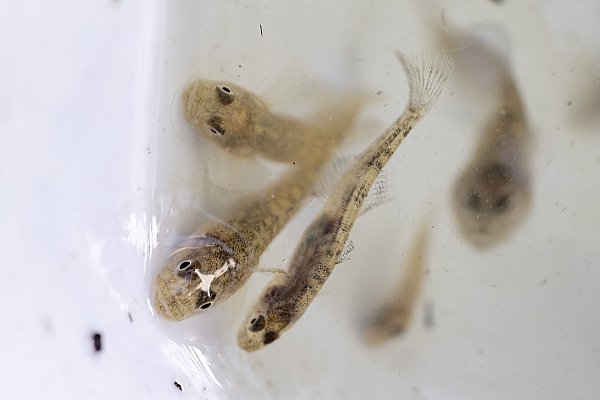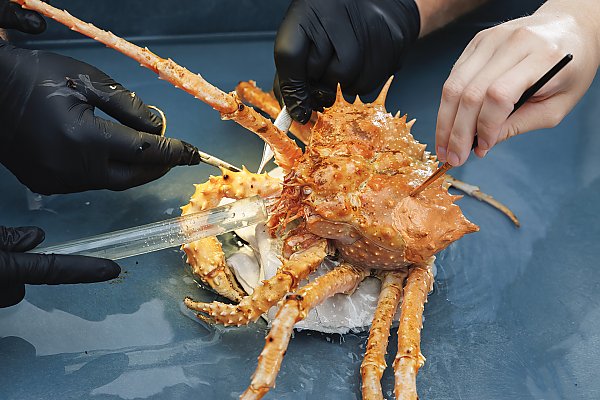May 31, 2022
A baby Magellanic penguin chick hatched at the Aquarium of the Pacific on May 22. The chick is currently in a nest with its parents in one of the burrows behind the scenes of the June Keyes Penguin Habitat. It will live there for a few weeks before moving to the Aquarium’s behind-the-scenes penguin nursery. Aquarium visitors will be able to see the chick and learn its sex when it joins the adults in the penguin habitat in the fall.
Update August 4, 2022: The penguin chick has spent its early development in the nest with its parents. Late June, the penguin chick lost weight and appeared lethargic. Testing revealed blood chemistry changes that prompted our veterinary and animal care staff to begin supportive treatments in a specialized care area at the Aquarium. As of today, the chick is in a critical but stable condition. Our staff will continue to do everything they can to help the chick.
The penguin parents who hatched the chick were Robbie and Kate, who were paired together for the first time this year. The Aquarium’s penguin breeding program is part of the Species Survival Plan administered by the Association of Zoos and Aquariums. This plan ensures the genetic diversity of the Magellanic penguin population living at zoos and aquariums.
Magellanic penguins usually lay two eggs at a time. The penguin parents take turns incubating the eggs, which will hatch after thirty-eight to forty-two days. At the Aquarium, babies stay with their parents in the nest for about twenty days. Then, the babies are ready to leave the nest and head to our behind-the-scenes penguin nursery, where they can learn important skills like swimming, eating fish and squid staff members offer them, and how to otherwise interact with humans. At this vulnerable stage before their feathers are watertight, it is much safer for the penguin chicks to stay in the nursery until about three months have passed and they have fledged, or replaced their last set of downy feathers with watertight adult feathers.
Magellanic penguins (Spheniscus magellanicus) are native to the coasts of Argentina and Chile in South America. In the summer they are found in land-based breeding colonies. In the winter migration season, they are at sea foraging, often following schools of anchovies, their preferred food. They are one of four species that are called banded penguins in reference to the distinctive black and white bands around their faces and bodies. Their relatives are the African penguin (S. demersus), Galapagos penguin (S. mendiculus), and Humboldt penguin (S. humboldti).















